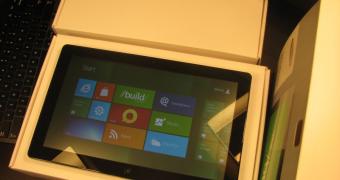Because it’s built with next generation form factors in mind, Windows 8 also needs to seamlessly adapt to the way users hold such devices, including tablets / slates.
Microsoft found that testers running Windows 8 would opt to use their next generation device in a way that would best tailor the content to the screen orientation.
As such, the Redmond company optimized the transition mechanism which allowed users to swap landscape and portrait screens.
David Washington, from the Windows user experience team revealed the goals of the landscape and portrait screen orientation:
“• You can easily rotate your tablet to best suit your task or ergonomic posture.
• Rotation in Windows is fast and fluid.
• Windows rotates predictably across the system and apps – keeping the user in control.
• Developers can easily build high quality and intentional landscape and portrait layouts, depending on the experiences they want to enable.”

 14 DAY TRIAL //
14 DAY TRIAL //